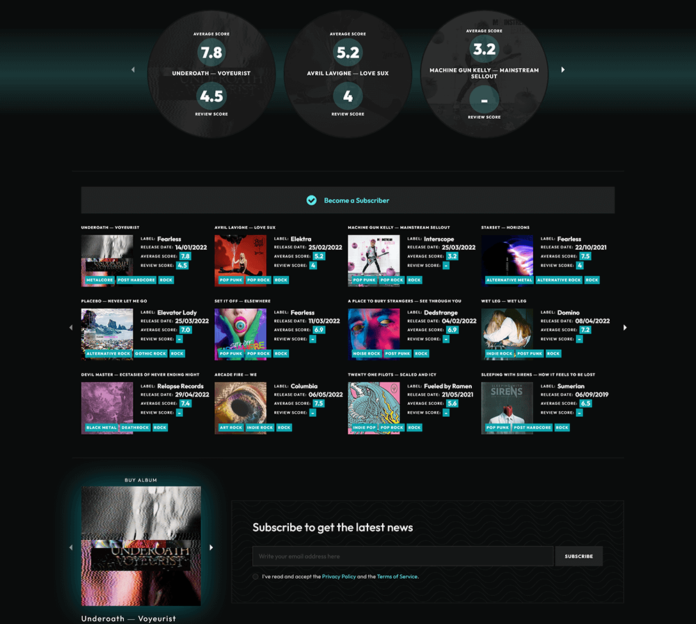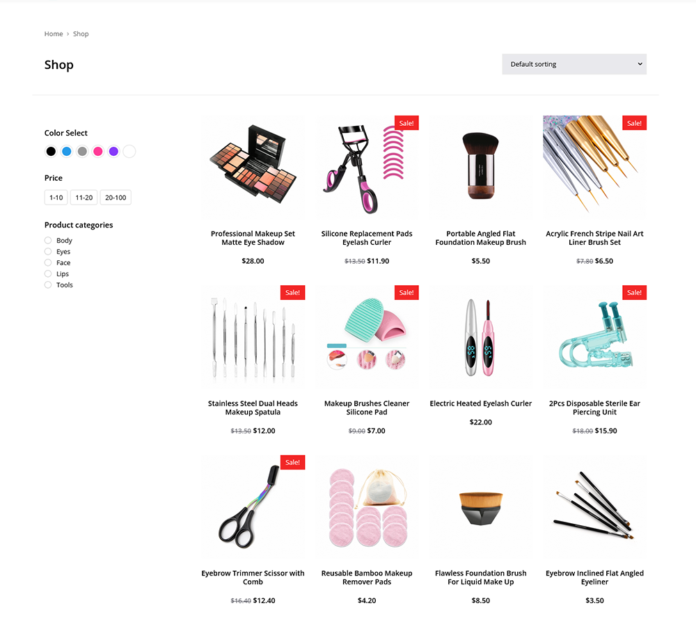The landscape of SEO is constantly evolving, and the question of whether to buy backlinks in 2025. Buying backlinks carries significant risks that could result in penalties from Google, making it crucial for site owners to approach this strategy with caution. As search engine algorithms become more sophisticated, the emphasis on high-quality, organic link-building grows stronger.
In the current digital environment, genuine content and user engagement are prioritized over artificial link schemes. A strong backlink profile, built on reputable sources, is essential. As Google becomes more adept at identifying manipulated link patterns, relying on purchased backlinks may lead to more harm than good.
Understanding the implications of backlink acquisition can help site owners navigate this challenging terrain. By focusing on ethical strategies and quality content, they can foster organic growth while avoiding potential penalties.
Understanding Backlinks in the Context of SEO
Backlinks are a crucial element of SEO. Their impact on search engine rankings has evolved, shaping how websites are evaluated and ranked. The following sections detail the importance of backlinks and how Google’s approach to them has changed over time.
The Role of Backlinks in Search Engine Algorithms
Backlinks serve as endorsements from one website to another. When a site links to another, it signals to search engines that the linked content is valuable and trustworthy. This endorsement can significantly influence a site’s ranking on search engine results pages (SERPs).
The quantity and quality of backlinks matter. High-quality backlinks from authoritative sites can enhance a site’s credibility. Conversely, links from unreliable sources can harm a site’s reputation and rankings. Therefore, securing backlinks from reputable, relevant sources is essential.
Evolution of Google’s Approach to Backlink Valuation
Google has refined its algorithms to better assess backlinks over the years. Initially, the number of backlinks was the primary factor in determining a site’s authority. This led to practices like link farming, where sites exchanged links extensively without relevance.
As a result, Google introduced measures to evaluate the quality of backlinks. Algorithms now consider the context, relevance, and trustworthiness of the linking site. Factors such as anchor text, link placement, and the overall link profile are pivotal in this assessment. This evolution aims to promote genuine content and reduce manipulative practices in SEO.
Google’s Penalties for Unnatural Link Building
Google employs specific criteria to evaluate backlink profiles. Sites that engage in unnatural link-building practices risk severe penalties, which can significantly affect their search rankings. Understanding the potential repercussions is crucial for site owners.
Criteria for Assessing the Quality of Backlinks
Google analyzes several factors when determining the quality of backlinks. Key criteria include:
- Relevance: Backlinks should come from sites within the same niche or industry. Irrelevant links may raise red flags.
- Authority: Links from high-authority domains carry more weight. Links from low-quality or spammy sites can harm a site’s credibility.
- Anchor Text: Over-optimization of anchor text with targeted keywords is suspicious. Natural variations are preferable.
- Link Velocity: An unnatural spike in backlinks in a short period can trigger an investigation. Consistency is essential.
These criteria help Google maintain a fair ranking system, penalizing sites that engage in deceptive link-building practices.
Case Studies of Penalized Sites
Numerous websites have faced penalties due to unnatural link building. For instance, a major e-commerce site acquired a large number of low-quality backlinks to boost initial rankings. After an algorithm update, the site experienced a significant drop in traffic as Google devalued these links, leading to decreased visibility.
Another example involved a blog that relied heavily on buying backlinks. The site suffered a manual penalty when Google reviewed its backlink profile. Recovery efforts required extensive disavowals and cleaning up their link profile before regaining trust.
These case studies illustrate the risks involved in engaging in questionable link-building strategies.
Recovering from a Backlink-Related Penalty
Recovery from a backlink-related penalty can be challenging but possible with the right approach. Key steps include:
- Audit Backlink Profile: Identify harmful links using tools like Google Search Console or third-party SEO tools.
- Disavow Unwanted Links: Use Google’s Disavow Tool to inform the search engine which links should not be considered.
- Improve Content Quality: Focus on producing high-quality content that naturally earns backlinks. Engage in authentic outreach to build relationships with reputable sites.
- Monitor Progress: Regularly check for improvements in rankings and traffic trends post-recovery efforts.
This structured plan can help websites regain their standing in search results after a penalty due to unnatural link-building practices.
The Risks of Buying Backlinks in 2025
Buying backlinks may seem like a quick way to boost search rankings, but it comes with significant risks. Understanding how Google detects these links and the role of artificial intelligence in link analysis is crucial for website owners.
Detecting Paid Links: Google’s Capabilities
Google employs sophisticated algorithms to identify paid links. It can analyze link patterns, anchor text, and the context of the linking domains. If a link is deemed unnatural or paid, it risks being flagged by the Google algorithm.
Key signals that indicate paid links include:
- Link Velocity: Abrupt spikes in link acquisition can raise red flags.
- Domain Authority: Links from low-quality or irrelevant sites are suspicious.
- Anchor Text Ratio: An unnatural balance of keyword-rich anchor texts can lead to penalties.
Website owners should be cautious and focus on organic link-building strategies to avoid penalties.
The Impact of Artificial Intelligence on Link Analysis
Artificial intelligence plays a pivotal role in refining Google’s link analysis techniques. It can detect patterns and inconsistencies in linking behavior that may indicate manipulation.
AI technologies are capable of:
- Contextual Analysis: Evaluating the relevance of linking contexts.
- Behavioral Patterns: Understanding typical linking behavior for various niches.
- Predictive Modeling: Anticipating potential manipulative tactics.
As AI advances, it becomes increasingly challenging for website owners to successfully purchase backlinks without consequences. The risk of being penalized grows higher, underscoring the importance of ethical SEO practices.
Best Practices for Acquiring Backlinks
Acquiring backlinks requires a strategic approach that focuses on quality and relevance. Engaging content, relationship building, and adhering to ethical link-building strategies are essential for success.
Creating Share-Worthy Content
High-quality content is fundamental for attracting backlinks. This includes articles, infographics, and videos that provide valuable insights, actionable tips, or unique data.
- Research Driven: Content backed by research or statistics tends to gain more traction.
- Visuals Matter: Infographics can make complex information digestible and shareable.
- Compelling Headlines: A strong headline can capture attention and encourage sharing.
Promotion of this content through social channels can also increase visibility, leading to more organic backlink acquisition.
Engagement and Relationship Building
Networking with industry peers and influencers can significantly enhance backlink opportunities. Building genuine relationships fosters trust and encourages link sharing.
- Social Media Interaction: Engaging with users on platforms like Twitter and LinkedIn creates awareness.
- Guest Blogging: Contributing articles to industry-related blogs establishes authority and provides backlinks.
- Follow Up: After making connections, follow up with personalized messages to reinforce relationships.
This proactive approach not only improves backlink acquisition but also enhances brand reputation.
Utilizing White Hat Link Building Strategies
Adopting ethical link-building practices is critical to avoiding penalties. White hat strategies promote sustainability and align with Google’s guidelines.
- Resource Pages: Seek out websites that feature resource lists and propose relevant content.
- Editorial Links: Create top-notch content that naturally attracts links from reputable sites.
- Broken Link Building: Identify and contact sites with broken links, suggesting your content as a replacement.
Through these methods, backlinks are acquired ethically, maintaining the integrity of the website and its search engine ranking.
Alternatives to Buying Backlinks
Exploring alternatives to purchasing backlinks can provide sustainable strategies for growing organic traffic. These methods can enhance a site’s authority without risking penalties from search engines.
Leveraging Social Media for Organic Link Growth
Social media serves as a powerful tool for driving organic backlinks. By sharing high-quality content, brands can engage their audience and encourage shares. This can lead to increased visibility and natural link acquisition.
Key strategies include:
- Regular posting: Consistency helps keep the audience engaged.
- Engagement: Respond to comments and messages to build a community.
- Hashtags: Use relevant hashtags to broaden reach and attract new followers.
Additionally, participating in relevant discussions or groups can attract attention to valuable content. This approach not only creates links but also fosters relationships within industry niches.
Guest Posting and Content Collaboration
Guest posting remains a popular and effective method to generate backlinks. It involves writing articles for other websites in exchange for a backlink to one’s own site. This strategy boosts credibility and brand visibility.
Key considerations for successful guest posting include:
- Target relevant sites: Focus on sites within the same niche to reach the appropriate audience.
- Quality content: Ensure the guest post provides value to the host site’s readers.
- Personalized outreach: Tailor communications when pitching to increase acceptance rates.
Content collaboration with other creators can also yield quality backlinks. Co-authoring articles or studies can enhance reach and build credibility for both parties involved.
Monitoring and Maintaining Your Backlink Profile
Maintaining a healthy backlink profile is crucial for website performance and search engine ranking. Regular audits and the use of management tools can significantly aid in achieving this.
Regular Backlink Audits
Conducting regular backlink audits is essential for understanding the quality and relevance of incoming links. This process involves reviewing the quantity of backlinks and assessing their sources. Tools like Google Search Console can help identify problematic links.
Key actions during audits include:
- Identifying Toxic Links: Look for links from spammy sites, which could harm the website’s reputation.
- Disavowing Unwanted Links: Disavow low-quality backlinks that may lead to penalties from search engines.
Regular reviews help maintain a strong link profile and mitigate any potential negative impacts.
Using Link Management Tools
Link management tools facilitate the monitoring and analysis of backlinks. These tools offer insights into link growth, anchor text diversity, and overall link quality. Popular options include Ahrefs, SEMrush, and Moz.
Benefits of using these tools include:
- Automated Monitoring: Receive alerts for new or lost backlinks, enabling swift action when necessary.
- Competitor Analysis: Evaluate backlinks of competitors to identify potential link-building opportunities.
Utilizing link management tools simplifies the tracking process and enhances strategic decision-making regarding backlinks.








